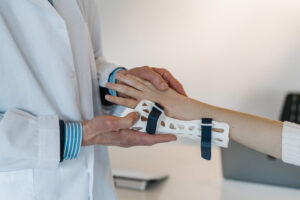How long will you live?
A simple test is giving medical professionals insight into the lifespan of their clients. No equipment required, it is as simple as sitting on the floor and standing back up. Go ahead, give it a try!
First: Lower your body to a seated position on the floor, now stand back up. How did you do?
ok… Let’s try it again.
This time, sit on the floor with out using your hands to help you get down. Then stand up with out using your hands and knees to help yourself up….a little bit harder right?!
SRT Test:
This study highlights that fact that as we age it becomes so very important to make sure that we can move well. Too often I see older individuals get stuck in a cycle where they can move well from a chair or bed but they struggle to get on and off the floor. At Trivida we always get asked why we don’t block all the floor exercises together. Well this is why and with the findings of this study I am more convinced than ever that we are doing the right thing but forcing people to get up and down of the floor. We are adding years back on to our clients lives!
There was a test developed in the 1990s that when used in a study consisting of 2002 adults aged 51-80 was able to give researchers accurate information regarding the participants risk of death within a 6 year period. In 2012 a group of researchers in Brazil published their study in the European Journal of Cardiovascular Prevention.
The researchers instructed the participants to try and sit up with the least amount of support that they believe necessary, and not worry about their speed. The participants were scored both on their ability to sit and rise up. For each time the participants used support from their hand, knee or other part of their body the researchers would subtract a point. A ½ point deduction was taken for unsteady balance. A total composite score out of 10 was assigned which would determine which category or group they belonged to. The categories were as follows:
- Level 1, 0-3 points
- Level 2, 3.5-5.5 points
- Level 3, 6-7.5 points
- Level 4, 8-10 points
After controlling for gender, age, and body mass index, the individuals in the Level 1 category were 5-6 times more likely to die within the next 6 year period than those in the Level 4 category. Participants scoring in the below an 8 were 2 to 5 times had mortality rates that were 2 to 5 times higher than those in the 8-10 point (Level 4) category. The researchers also noted that a 1 point increment in the score was related to a 21% reduction in mortality!
So now it is time for you to try the test and report back:
- Ideally you should be barefoot and in non-restrictive clothing
- Do not worry about the speed of movement
- Try to sit and then to rise from the floor using the minimum support that you believe is needed
- Partial scores begin with a maximum of 5 points, separately for sitting and rising.
- One point is subtracted for each support utilized (hand, forearm, knee, lateral side of the thigh, or one hand on the knee or thigh)
- An additional 0.5 point is subtracted if an unsteady execution (uncontrolled decent to the floor or partial loss of balance)
- Crossing the legs for either sitting or rising from the floor is allowed.






